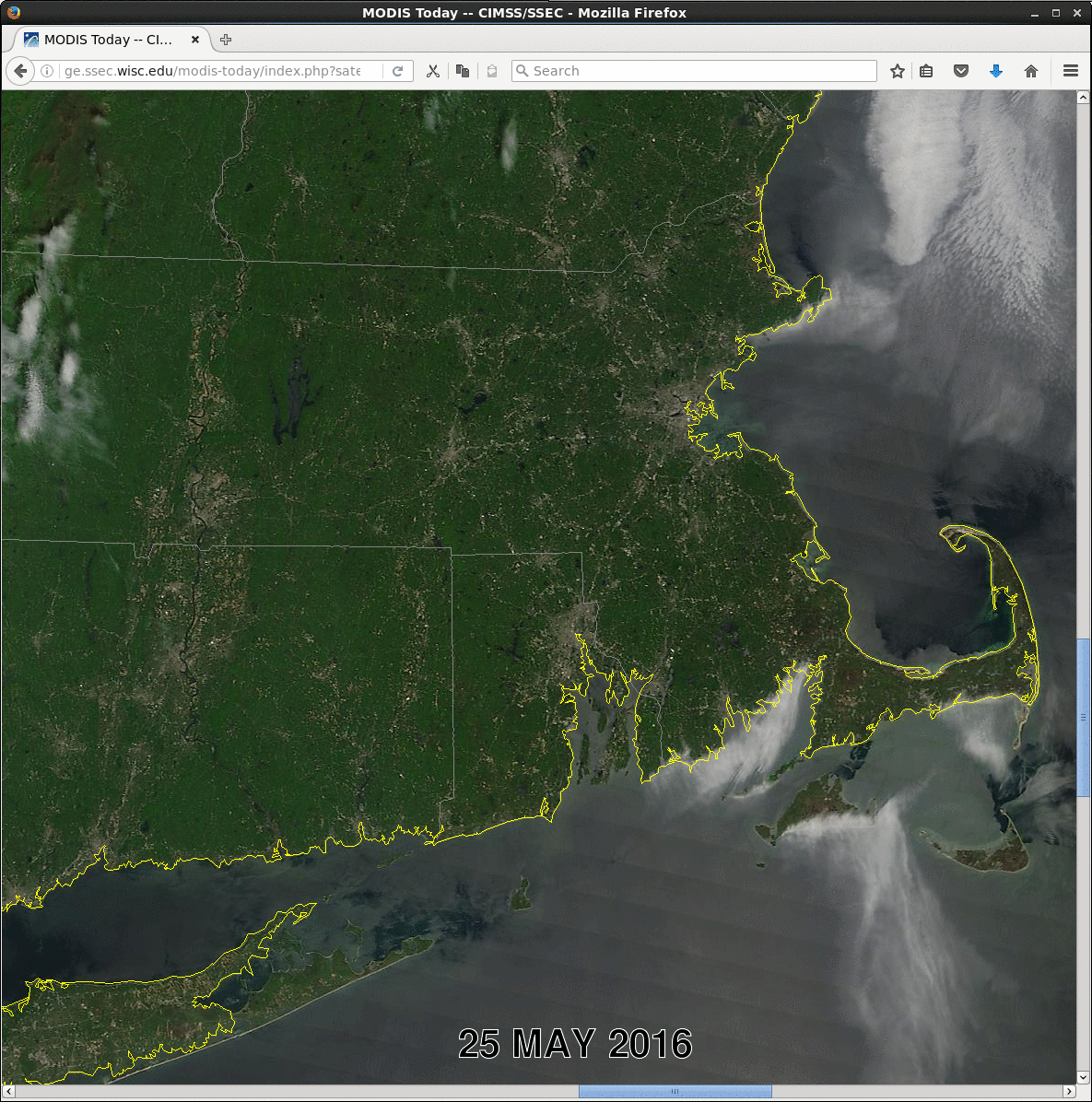Gypsy moth defoliation in parts of New England
Props to the Boston/Taunton National Weather Service forecast office for sending out the following on Twitter:
Taking a closer look at 250-meter resolution Terra MODIS true-color (Bands 1/4/3) Red/Green/Blue (RGB) images from the SSEC MODIS Today site (above), the loss of “green-ness” due to defoliation of large areas of trees is quite evident — most notably in western Rhode Island, but also across the border into extreme southern Massachusetts and in parts of eastern Connecticut. This defoliation was caused by an infestation of gypsy moth caterpillars (media report 1 | media report 2).Late May ? late June, tree defoliation per caterpillars across SE New England is notable, esp W RI pic.twitter.com/AfRYKxdPEL
— NWS Boston (@NWSBoston) June 26, 2016
The corresponding Terra MODIS false-color (Bands 7/2/1) RGB images (below) also help to highlight the areas of tree defoliation, as indicated by a decrease in bright green hues.
On 25 June, the highly-concentrated area of tree defoliation across northwestern Rhode Island exhibited a low Normalized Difference Vegetation Index (NDVI) of 0.4 to 0.6, compared to other areas in the southern and eastern part of the state where NDVI values were in the 0.7 to 0.8 range (below). Much of the affected region was experiencing Abnormally Dry to Moderate Drought conditions, and had only received between 25-75% of normal precipitation during the preceding 30/60/90-day periods — this created ideal conditions for the hatching of gypsy moth caterpillar eggs. If these dry conditions persist, it will limit the ability of the deciduous trees to recover and begin producing leaves again during the remainder of the summer season.


![Terra MODIS false-color images from 25 May and 26 June 2016 [click to enlarge]](https://cimss.ssec.wisc.edu/satellite-blog/wp-content/uploads/sites/5/2016/06/160525_160626_terra_modis_falsecolor_MA_CT_RI_anim.gif)
![Aqua MODIS Normalized Difference Vegetation Index (NDVI) product [click to enlarge]](https://cimss.ssec.wisc.edu/satellite-blog/wp-content/uploads/sites/5/2016/06/MODIS_NDVI_20160625_1818.png)